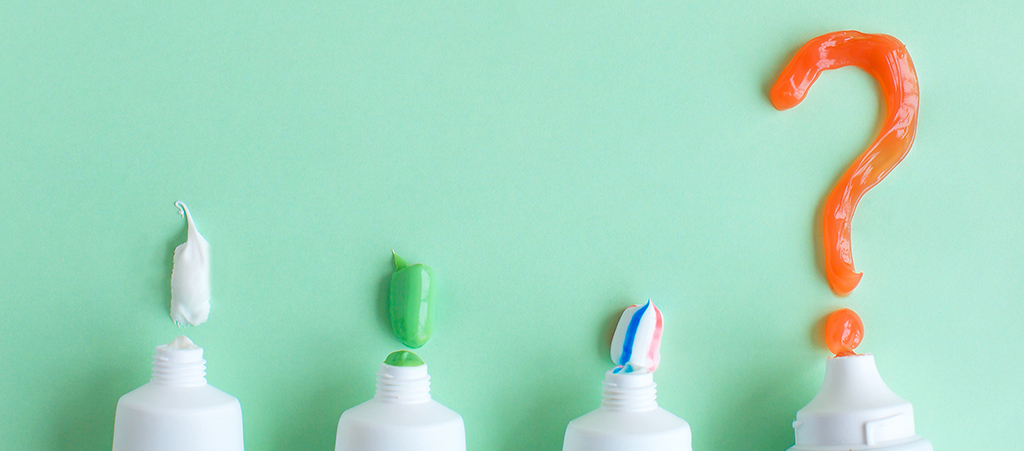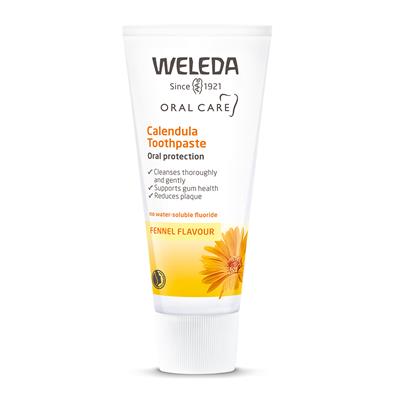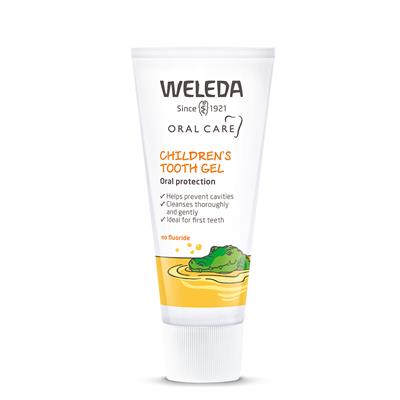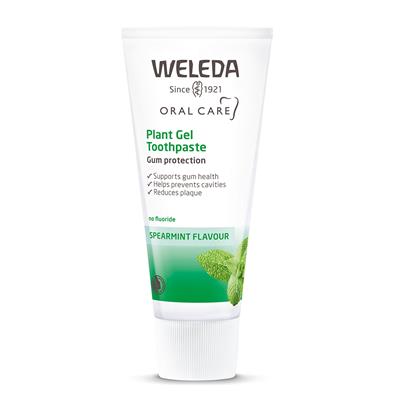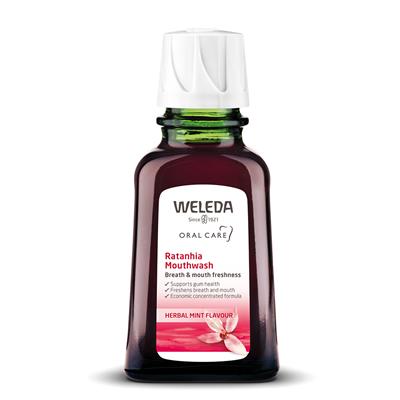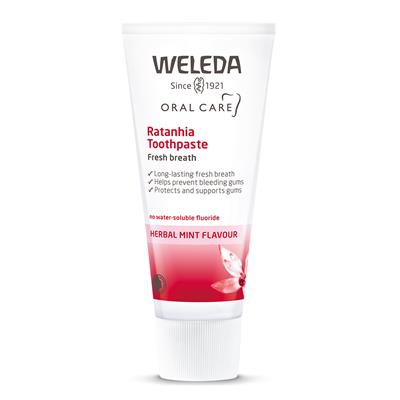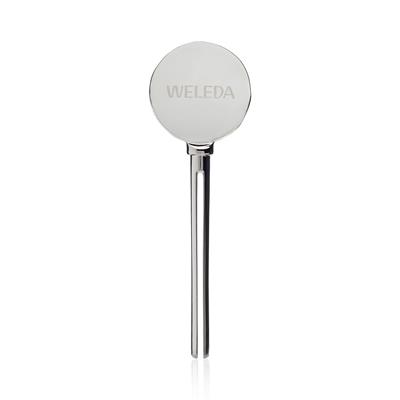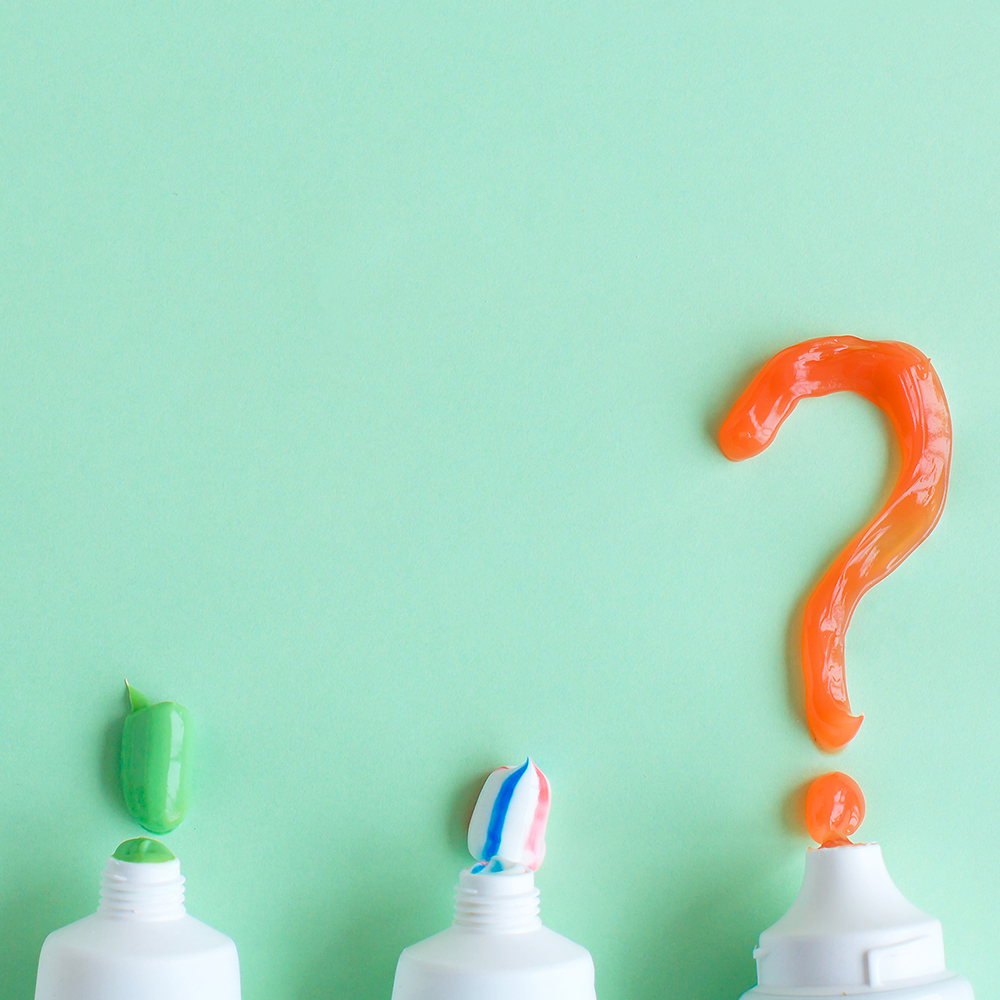
Is fluoride necessary for good oral health?
Two dentists discuss the pros and cons of fluoride and its place in oral hygiene09 June 2022
We chat to dentists Samantha Jugdev and Fred Dartford about the advantages and disadvantages of fluoride for oral health.
At Weleda we do not add fluoride to our oral care formulations. Fluoride is naturally occurring in small amounts or traces, for example in some plants, but it is not readily available in a natural form that can be used on a commercial scale, and so toothpaste manufacturers produce a synthetic form of fluoride to add to their products.
With fluoride found in several foodstuffs and drinks, and artificially added to water supplies in many areas, many of our customers consciously avoid added fluoride in their oral care products, as ingesting too much fluoride can put us at risk of dental fluorosis. In small amounts fluoride has positive effects on our bones and teeth, but in large amounts it can also have negative effects. Which is why there are strict directions on pack about only using a pea-sized amount of fluoride toothpaste, and why parents should supervise their children’s brushing, to ensure the toothpaste is spat out and not swallowed.
So at Weleda we have created a range made without added fluoride, to provide the choice.
What is dental fluorosis?
FD: Fluoride combines with the minerals in our teeth to make the enamel more acid resistant. It works in two ways: systemically, when ingested into the body while teeth are forming, and topically in toothpaste when it protects from the outside. If too much is ingested while teeth are forming it results in fluorosis, which is a visible discolouration or mottling of the enamel like little flecks of white or darker colour.
SJ: The enamel of teeth is crystalline and the centre of the crystal is easily dissolved away with acid, either from our food or produced by bacteria. Fluoride can attach itself to the centre of the crystal and helps make the enamel more resistant to damage which is why it is added to a lot of toothpastes. However, if there is too much fluoride present, more of the crystal is affected and this changes the enamel. The appearance becomes more opaque and in its milder form is seen as solid white areas, in more severe cases this looks like coffee staining. For the teeth this is mainly an aesthetic issue and not easy to treat but, as I said earlier, our mouths are a reflection of the rest of the body and we know that higher quantities of fluoride are toxic.
When are fluoride-free toothpastes useful?
FD: Fluoride-free oral care products are useful in areas where water contains fluoride. They are also useful when children are learning not to swallow toothpaste, especially when parents may have been advised by their dentist not to rinse.
SJ: This is a difficult question to answer!
I believe that diet is the most important factor for good oral health. What is good for the whole body is usually also good for the mouth. My recommendations are to reduce or avoid sugars and refined carbohydrates; this includes over-processed foods, white bread, pasta etc. We should also eat lots of fruit and vegetables, this not only nurtures the good bacteria throughout our whole gut but gives our bodies the materials we need to repair and build our tissues.
With diet it is also important to consider when we eat. Ideally, we should only eat food 3-5 times a day. Grazing in between meals, even on fruit, dried or otherwise, stops our mouths from regaining a healthy equilibrium and puts us at a high risk of dental decay. This grazing also includes drinks, especially soft drinks with added sugar, and even if they are “diet” drinks they are acidic and erode the surface of our teeth.
The second most important point is good dental hygiene. We can use toothpastes and mouthwashes but at the end of the day these can only help if we are physically removing the bacteria that build up on our teeth, tongue and other soft tissues. We need to develop good toothbrushing technique, cleaning right to the gum level and use aids in between the teeth where even the best toothbrushes can’t get to. Traditionally this is floss but there are lots of other interdental aids we can use and even old-fashioned wooden toothpicks work extremely well in the right hands. It should take at least two minutes twice a day to brush our teeth and extra time for cleaning in-between. People with more serious gum disease may need to take 15-20 minutes.
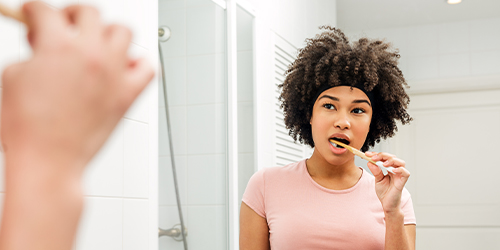
The above two points are enough to maintain good oral health on their own if vigorously followed (though the odd biscuit isn’t an issue). Of course visiting your dentist and their team is also very important. This is an opportunity to notice problems early when they are easier to deal with. They can also advise you on which areas you might be missing when you are cleaning. Having hygiene treatment is also useful to remove the tartar from your teeth. Tartar is mostly minerals from saliva that build up on the teeth for all of us. It does not cause problems in itself, but provides a rough surface for the bacteria to attach to and can reduce the efficiency of your cleaning at home.
And then there’s fluoride, which does have its place. For various reasons some people are at high risk of getting dental decay and fluoride alters the mineral structure of our enamel and dentine making them more resistant to damage and decay. The people that are at high risk are often those with a high sugar and refined carbohydrate diet, those who find cleaning difficult or are not carrying this out optimally, and people with dry mouths. A lot of our older generations are on several different medications with dry mouth as a common side effect. We need saliva to flow and prevent stagnation of food, debris and bacteria around the teeth; saliva also helps balance the acid level protecting the teeth from decay. However, with a good diet and excellent oral hygiene for most people, the amount of fluoride used could be reduced or dropped.
Shop the Weleda Oral Care Range:
Calendula Toothpaste 75ml
Item No.
101001
£5.95
Add to basket
Children's Tooth Gel 50ml
Item No.
101005
£4.50
Add to basket
Plant Gel Toothpaste 75ml
Item No.
101006
£5.95
Add to basket
Ratanhia Mouthwash 50ml
Item No.
101009
£10.50
Add to basket
Ratanhia Toothpaste 75ml
Item No.
101002
£5.95
Add to basket
Tube Squeezer Key
Item No.
405741
£3.95
Add to basket
Samantha Jugdev BSc (Hons), BDS (Brist), MFHom (Dent):
Samantha Jugdev studied dentistry in Bristol and established a dental practice with her husband Jasvinder in Oxfordshire in 2004 where she specialises in periodontics (gum disease). She currently Chairs the British Homeopathic Dental Association.
Fred Dartford BDS (Lon), LFHom:
Fred Dartford qualified as a dentist in 1972 and set up his own dental practice in Kent in 1994. In 2005 he joined the British Homeopathic Dental Association and subsequently specialised in holistic dentistry for over 15 years.

